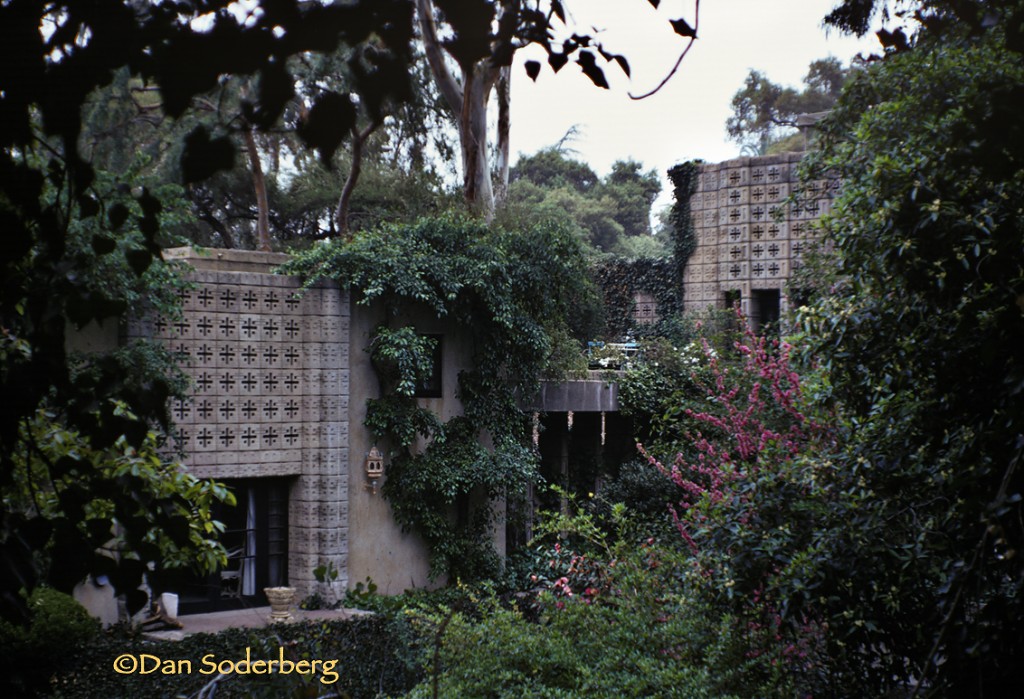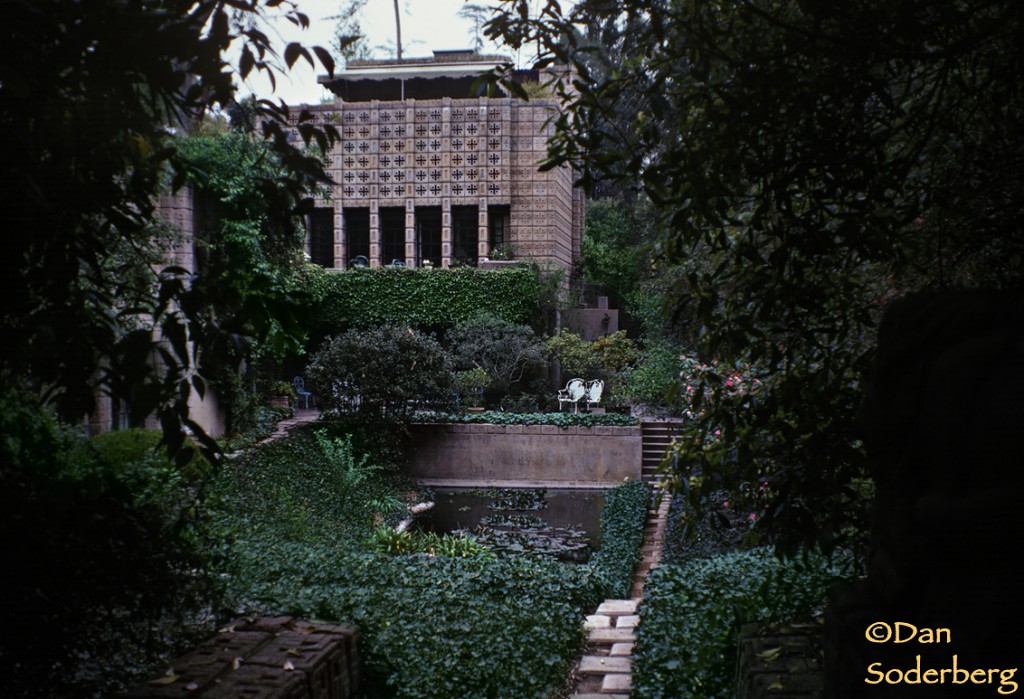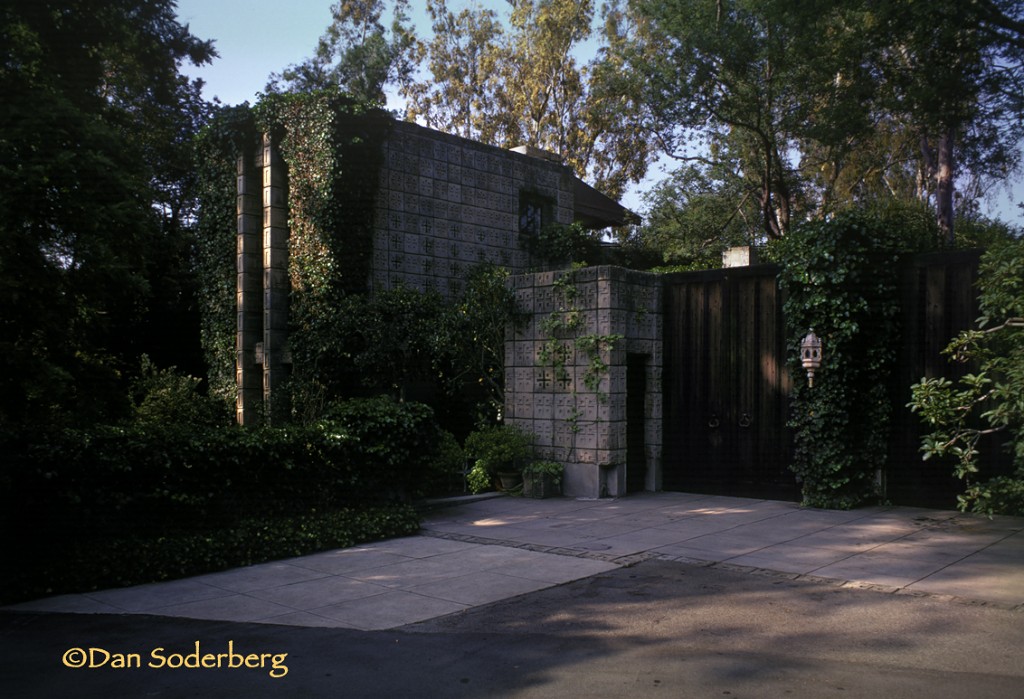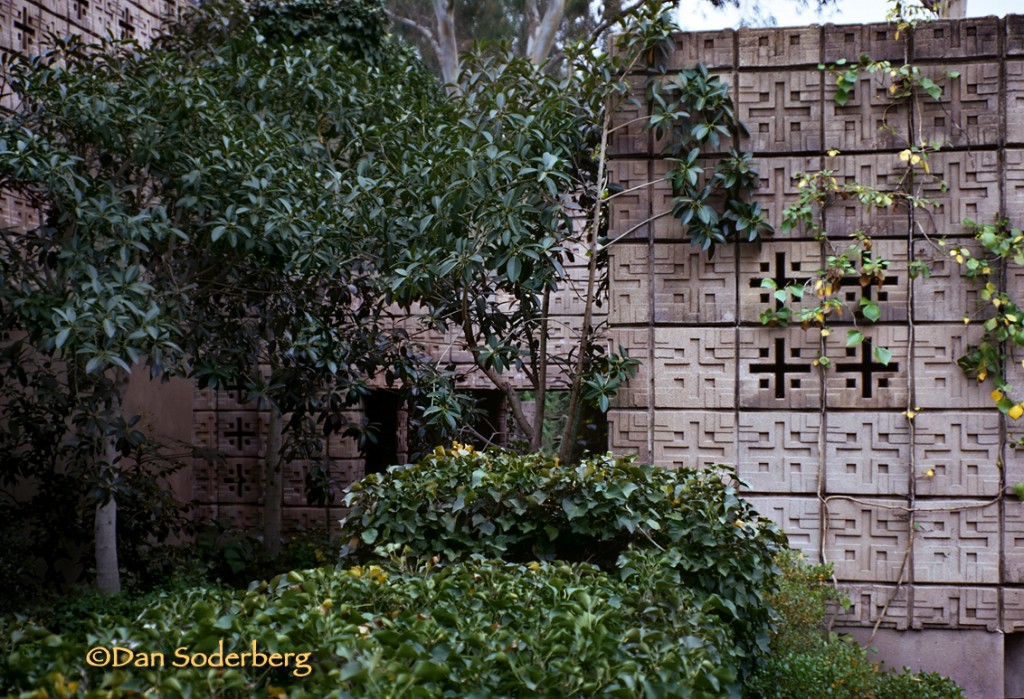La Miniatura
Photos from March 1972
In the early 1920’s Frank Lloyd Wright sought to create a new architectural vocabulary for California. One not based on Spanish Colonial, Mission, or Craftsman. Wright almost never pointed to inspiration for his designs, but one can certainly have a hunch he tapped the ancient Mexican and South American civilizations for the look of his concrete textile block homes in Los Angeles in 1923 and 1924.
The first of these homes was the Alice Millard House in Pasadena, 1923.
This was the second home he designed for this particular client. The previous one was done 17 years earlier in Highland Park, Illinois, for her and her late husband. Wright said he was proud to have a repeat client. “Out of one hundred and seventy-two buildings this made only the eleventh time it happened to me. So, gratefully, I determined she should have the best I had in my portfolio.”
Indeed it is regarded as one of his best. Brendan Gill wrote “La Miniatura is assuredly among the most beautiful houses to be found anywhere in the world, regardless of size.”
Gill questioned, however, the wisdom of the site chosen for the home. It is an arroyo. “For obvious reasons (it is) not thought desirable as a building site. So Mrs. Millard was able to acquire the arroyo property at a low price. Flying in the face of conventional prudence, Wright and she decided to build at the bottom of the arroyo, where a small pool would be dug to reflect the house.” All four of the textile block homes Wright built in L.A. in 1923 and 1924 had water damage issues. Gill may well have a point. But clearly both client and architect loved where the house was built.
“The interior is as exquisite in its shapeliness as the exterior and has a plan of remarkable ingenuity, comprising three full floors and terraces at four levels, with easy access to it surroundings and to the street.”
The concrete block as a construction material was not new in 1923. But Wright’s construction method was unique. As well as his attention to design pattern. He envisioned this becoming a low cost way to build elegant homes–a design goal he remained interested in decades after these first experiments. Unfortunately the textile block homes of this period all went over-budget and proved to be very difficult to build. They are imperfect works of great art. But as works of art they are very important in history. The effort to save these homes has been a challenging cause, if not heroic. The fate of the Millard house has been uncertain for years. One investor wanted to move the house to another site. I suspect it was determined to be infeasible, and would have been a disaster. From what I can tell the house is currently for sale. Here is the agent selling the home–providing some great interior shots for us to see.




